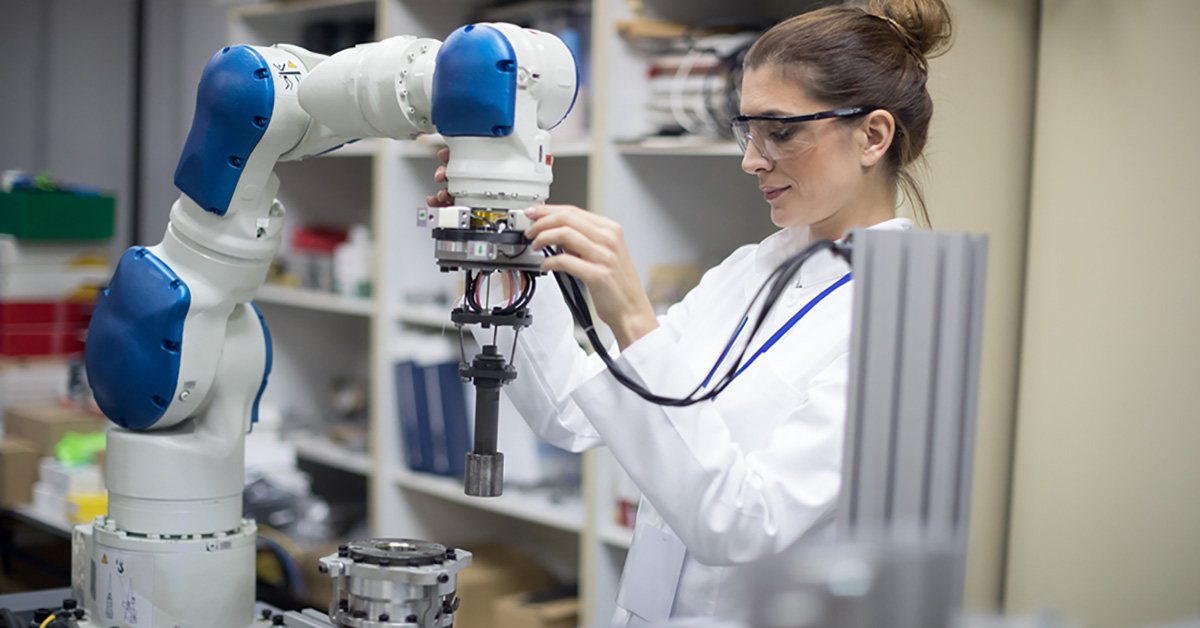
Collaborative robots have become increasingly popular in recent years, as they offer unique advantages in manufacturing, engineering, and other industrial applications. Also known as cobots, collaborative robots are designed to work side by side with humans in the same workspace – but what types of these helpful machines exist?
This article will explore the different kinds of cobots available today, from lightweight pick-and-place units to heavy-duty welding equipment. Keep reading to learn more about how each type works and why you should consider investing in a cobot for your organization.
Pick-And-Place Robots
Pick-and-place robots are a type of collaborative robot, and they can help businesses in many different ways. Instead of relying on human labor to transport supplies, pick and place robots provide a more efficient method for automating tasks. With motion control programs that allow for fast operations, these machines can pick up items from one spot and place them in another. It could be done within minutes, depending on the complexity of the task.
They are beneficial in factories that need to fill packaging or assemble products quickly and efficiently. Pick-and-place robots can save time, money, and resources and improve processes exponentially.
Mobile Robots
Mobile robots are another popular type of collaborative robot, and they typically have a wheeled base that allows them to move around the workspace. They can be programmed to carry out complex tasks like navigating tight spaces while avoiding obstacles or executing specific commands autonomously.
These cobots are extremely useful in warehouses and factories where materials might need to be transported from one area to another. Additionally, they can help reduce human error and optimize production processes by precisely controlling the speed and direction of their movements.
Articulated Robots
Articulated robots are a type of cobot that use jointed arms to move around and complete tasks. They are typically programmed with the latest robotic technology, which allows them to operate in complex environments where they may need to bend or rotate their arms to reach certain spots.
These robots can be used for various tasks, such as welding, painting, and material handling. They are often seen in factories where they can be used for precise assembly operations requiring high accuracy.
SCARA Robots
SCARA robots are a type of collaborative robot that use parallel joints to complete tasks. They typically have four arms in the shape of an “X,” which gives them increased flexibility and range of motion compared to other robots.
These machines can be used for assembly operations, picking up items, and placing them in a precise location. They are often seen in electronics, automotive, and medical device manufacturing, where they can help increase productivity and reduce costs.
Delta Robots

Delta robots are a type of cobot that use three arms in the shape of a triangle to complete tasks. They can move and actuate quickly, making them ideal for picking up and placing items precisely.
These robots are often used for fast-paced assembly applications, as they can quickly pick up parts and move them around the workspace while avoiding collisions. They are commonly seen in the food and beverage packaging industries, where they can help speed up production processes.
Dual Arm Cobots
Dual-arm cobots are a type of collaborative robot that use two arms to complete tasks. These machines are often used for assembly applications, as they can pick up items and place them in a precise location. Additionally, they can be used for welding and material handling tasks.
By using two arms instead of one, these robots can increase productivity and accuracy while reducing the amount of time it takes to complete tasks. Additionally, they can help reduce human error and optimize production processes.
Welding Robots
Welding robots are a type of collaborative robot that use robotic arms to weld objects together. They are typically programmed with the latest welding technology and can be used for complex applications such as spot welding, arc welding, and MIG/MAG welding.
These cobots are ideal for automotive manufacturing and heavy machinery industries, where they can help reduce production costs and optimize welding processes. Additionally, they can assist in reducing human error and improving the overall quality of welds.
Robotic Grippers
Robotic grippers are a type of cobot that use specialized tools to pick up and manipulate objects. They typically have two or more fingers that can be used to grip and move items in a precise manner.
These robots are often seen in factories and warehouses where they can be used for material handling tasks. Additionally, they can provide increased accuracy when compared to traditional human-operated systems.


:max_bytes(150000):strip_icc()/GettyImages-1178142194-f27d024c97634d078cd571a005dd3866.jpg)
